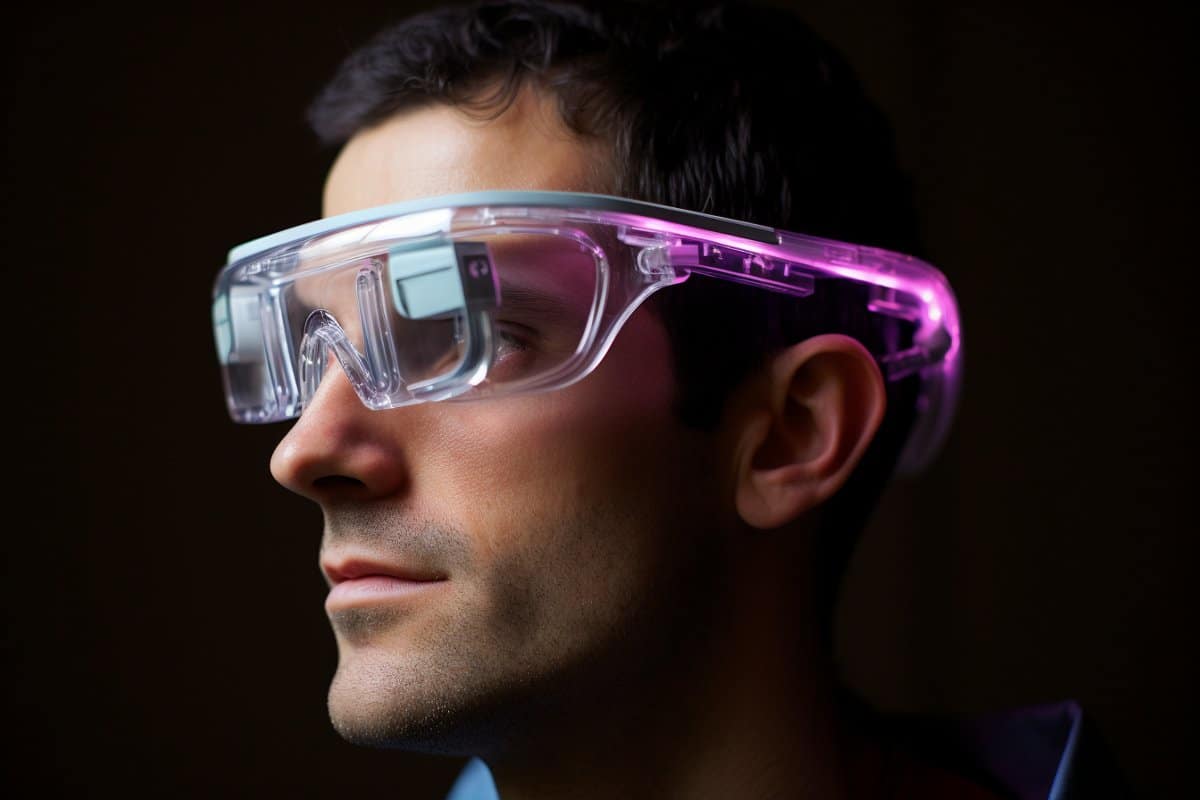Wearable Technology for Low Vision: Transforming How We Navigate the World
Wearable Technology for Low Vision: Transforming How We Navigate the World
Blog Article
Enhancing Availability With Assistive Technology for the Blind
The assimilation of assistive modern technology for the blind stands for a crucial development in accessibility, basically modifying just how people navigate their atmospheres and engage with culture. As we discover the varied kinds of assistive tools and their concrete effects on day-to-day living, it becomes crucial to analyze just how recurring technical developments are improving the landscape of assistance for the blind neighborhood.
Overview of Assistive Technology
Assistive innovation describes a series of tools and software application designed to improve the capabilities of individuals with impairments, consisting of those who are visually impaired or blind. This technology plays a vital duty in promoting independence and enhancing the high quality of life for users. By offering different techniques for accessing information and carrying out day-to-day tasks, assistive technology equips people to navigate their settings extra effectively.
The growth and execution of assistive technology accept a variety of concepts focused on promoting ease of access. These principles include user-centered style, which prioritizes the needs and preferences of the individual, and the integration of technology into daily tasks. Such improvements guarantee that assistive devices are not just useful but additionally instinctive and very easy to make use of.
Furthermore, assistive modern technology includes a diverse range of options, from low-tech options like magnifiers to sophisticated developments such as screen readers and Braille display screens. The ongoing advancement of this field is driven by the demand to attend to the unique difficulties encountered by individuals with visual disabilities (Wearable technology for low vision). As innovation remains to advancement, the potential for improving availability and promoting inclusivity remains appealing, inevitably adding to a more fair society

Types of Assistive Tools
Countless kinds of assistive tools are available to sustain people who are visually damaged or blind, each designed to address certain needs and difficulties. These devices can be generally categorized right into 3 major types: low-tech, mid-tech, and state-of-the-art services.
Low-tech tools include items such as magnifiers, Braille labels, and responsive maps. These are reasonably simple tools that improve the user's capacity to engage with their setting without requiring complex modern technology.
Mid-tech gadgets commonly involve advanced attributes, such as electronic magnifiers and portable Braille note-takers. These tools can provide performances like speech output, allowing users to access details more effectively.

Influence On Daily Living
The accessibility of numerous assistive devices dramatically enhances the lifestyle for individuals that are blind or visually impaired, influencing their everyday living in profound methods. By integrating technologies such as display readers, Braille displays, and audio description solutions into their routines, individuals acquire higher freedom and freedom. These devices help with access to details, making it possible for individuals to perform daily jobs, such as reviewing e-mails, navigating public areas, and taking pleasure in media content.
Furthermore, assistive devices empower people to engage even more fully in social interactions and area activities. The ability to make use of smart devices geared up with availability features permits smooth interaction and link with others. This connection promotes a feeling of belonging and lowers feelings of isolation.
In expert setups, assistive modern technology supports efficiency by permitting people to full job tasks efficiently. Devices like voice recognition software application and specialized zoom gadgets enable customers to take part in the workforce on equal footing with their sighted peers.

Improvements in Modern Technology
Current technological improvements have substantially changed the landscape of tools offered for individuals who are blind or aesthetically impaired. The combination of expert system (AI) and artificial intelligence has actually generated applications that improve navigation and object acknowledgment. For instance, smart device applications can currently use AI to identify and describe surroundings in real-time, providing customers with useful contextual information.
Additionally, improvements in haptic technology have brought about the advancement of smart walking canes equipped with sensors that discover challenges and supply tactile responses. This empowers individuals to navigate their setting with boosted self-confidence and freedom. Advancements in read the article text-to-speech software application and braille displays have boosted the access of electronic web content, permitting for smooth interaction with various media.
Wearable innovations, such as smart glasses, are additionally making strides in aiding aesthetic problems. As innovation continues to develop, the possibility for even more transformative devices continues to be on the perspective.
Future Trends and Innovations
As modern technology swiftly proceeds, the future of assistive tools for individuals who are blind holds enormous guarantee. Developments in artificial intelligence (AI) and artificial intelligence are positioned to transform the means blind customers engage with their atmospheres. AI-driven applications are being developed to improve item acknowledgment, permitting individuals to determine and navigate their surroundings with higher ease and precision.
In addition, innovations in haptic comments technology are allowing the production of tactile maps and navigating aids that supply real-time information through touch. These technologies not just improve mobility however also foster freedom. Furthermore, wearable tools furnished with enhanced reality (AR) features are emerging, supplying users aesthetic information with sound summaries, thus connecting the space between the electronic and physical worlds.
Additionally, the integration of wise home innovation presents brand-new possibilities for accessibility, permitting people to control their living settings with voice commands or smart device applications. As cooperation in between technology developers and the blind community continues, the emphasis on user-centered style will certainly make certain that future innovations are customized to fulfill the distinct needs of this populace (Wearable technology for low vision). The trajectory of assistive modern technology assures a much more inclusive and empowering future for individuals that are blind
Verdict
Finally, assistive technology plays a vital function in improving access for people with visual disabilities. The varied variety of tools, including screen visitors and clever walking sticks, significantly enhances everyday living and cultivates self-reliance. Continual innovations in technology and user-centered design family eye care center ensure that these tools cater successfully to the unique requirements of the blind neighborhood. As technologies progress, enhanced inclusivity and empowerment can be expected, ultimately improving the quality of life for those affected by aesthetic disabilities.
The combination of assistive technology for the blind represents an essential innovation in ease of access, fundamentally altering just how individuals browse their atmospheres and engage with society.Assistive technology refers to an array of gadgets and software made to enhance the capabilities of people with specials needs, including those who are visually damaged or blind. Wearable technology for low vision.As innovation rapidly progresses, the future of assistive devices for people that are blind holds immense guarantee. The trajectory of assistive innovation guarantees a much straight from the source more empowering and comprehensive future for individuals that are blind
In verdict, assistive technology plays an essential function in boosting ease of access for people with aesthetic problems.
Report this page